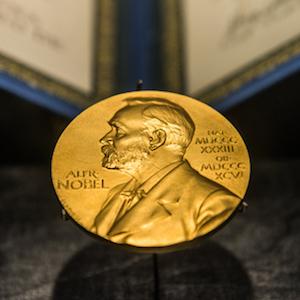Early on October 3, 2016, the world-famous committee in Stockholm announced that Japanese scientist Yoshinori Ohsumi had been awarded the Nobel Prize in Physiology or Medicine for discovering autophagy. So, what is it?
Autophagy is a type of programmed cell death. Some of the cells in multicellular organisms, like animals and plants, choose to self-destruct for the greater benefit of the organism. This can occur for a variety of reasons. If a cell outlives its usefulness, is nutrient deprived, or becomes infected, the cell considers suicide a viable option.
There are several different ways in which a cell can die. Two mechanisms that are particularly well-studied are neat and orderly, sort of the cellular equivalent of "death with dignity." The first, called apoptosis (the second "p" is silent!), involves the activation of a molecular pathway that results in the cell's DNA being chopped to pieces, after which the cell breaks up and is devoured by other cells.
The second mechanism, autophagy, causes the cell to eat itself from the inside. (See diagram.)

First, an internal membrane forms and engulfs various components, such as the tiny organs ("organelles") that keep the cell alive. This structure, called an autophagosome, then fuses with a lysosome, a nasty bag of acid and enzymes that cells keep handy for various reasons (e.g., killing bacteria and recycling old or damaged cell parts). The merger produces an autolysosome, in which the engulfed structures are destroyed. Finally, similar to apoptosis, the cell breaks into pieces and is eaten by other cells.
The molecular mechanisms that govern apoptosis and autophagy are greatly intertwined. It may seem ironic, but research shows that the true role of autophagy, particularly in higher animals (like you), appears geared toward (1) recycling and (2) preventing cell death rather than promoting it. Stressed heart cells, for instance, are likelier to survive if they undergo a limited form of autophagy.
Therefore, the consensus is that autophagy, in addition to its primary function as a recycling service, serves as a last-ditch effort to conserve and reuse resources in deeply troubled times. Whether it plays an active role in cellular suicide in higher animals is unclear, although it is known to be necessary for certain cells of some lower organisms to kill themselves.
Its role in existential issues aside, autophagy is clearly important in humans. Defects in the process may be linked to several human diseases, such as Parkinson's and Crohn's.
Sources
Susan L. Fink and Brad T. Cookson. "Apoptosis, Pyroptosis, and Necrosis: Mechanistic Description of Dead and Dying Eukaryotic Cells." Infect. Immun. 73 (4): 1907-1916. Published: April 2005. doi: 10.1128/IAI.73.4.1907-1916.2005. (Link)
Alicia Meléndez and Beth Levine. "Autophagy in C. elegans." Worm Book. Accessed: 3-Oct-2016. (Link)
Kadija Abounit, Tiziano M Scarabelli, and Roy B McCauley. "Autophagy in mammalian cells." World J Biol Chem. 3 (1): 1–6. Published: 26-Jan-2012 26. doi: 10.4331/wjbc.v3.i1.1 (Link)
Stephen W. G. Tait, Gabriel Ichim, Douglas R. Green. "Die another way – non-apoptotic mechanisms of cell death." J Cell Sci 127: 2135-2144. Published: 2014. doi: 10.1242/jcs.093575 (Link)
(Image: Worm Book)




